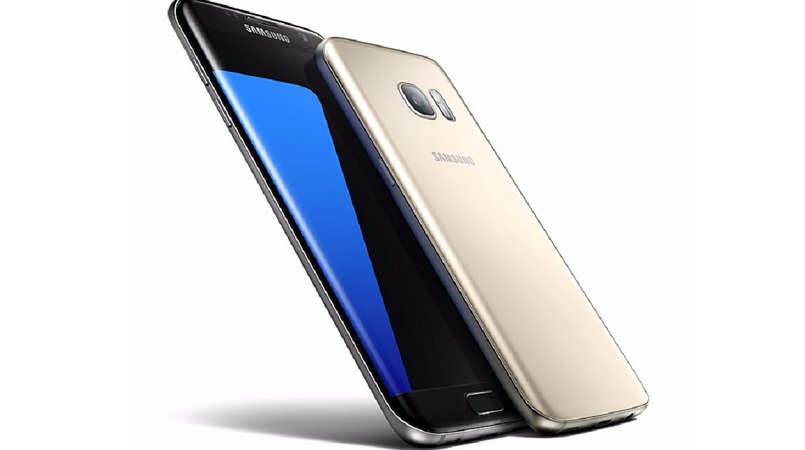
Here we go again! After months of extensive leaks, Samsung’s 2016 flagship smartphones are here: the Galaxy S7 and Galaxy S7 Edge.
The good news is they provide a potentially class leading combination of beauty and brains. The bad news is you have to look a little more closely to see it.
So let’s dive in…
The Big Differences
Design & Size – Two Distinct Choices
The arrival of the Galaxy S7 and Galaxy S7 Edge see Samsung simplify its smartphone line-up. Whereas Samsung previously offered 5.1-inch S6 and S6 Edge models as well as a third larger 5.7-inch S6 Edge+, now there are just two versions to choose from:
5.1-inch Galaxy S7 – 142.4 x 69.6 x 7.9mm, 152g
5.5-inch Galaxy S7 Edge – 150.9 x 72.6 x 7.7mm, 157g
Interestingly both phones are thicker (1mm) and heavier (S6 138g, S6 Edge+ 153g) than their predecessors, but they are also narrower and shorter with more rounded backs that should make them easier to hold and use one handed. Given Samsung has stuck with glass rear panels and a smooth aluminium finish to the sides of both phones, this is very welcome.
The Galaxy S7 and S7 Edge will come in Black Onyx and Gold Platinum while the the latter also gets the option of Silver Titanium.
Displays – More Than An Edge
Galaxy S7 – 5.1-inch flat panel, 2560 x 1440 pixels, Super AMOLED display
Galaxy S7 Edge – 5.5-inch curved panel, 2560 x 1440 pixels, Super AMOLED display
Yes the new S7 Edge has a larger screen than the S7 as well as the curved screen sides recognisable to the Edge brand, but it also brings more software smarts to the table.
As with previous Samsung Edge models, a swipe from the side of the S7 Edge screen still brings up widgets and app shortcuts, but it now supports third party app integration and double width widgets for more information hopefully making it less gimmick and more substance. Samsung will bring this upgraded software to both the S6 Edge and S6 Edge+, but it won’t come to the Galaxy S7 or S6.
On the plus side, both the Galaxy S7 and Galaxy S7 Edge displays have increased brightness, colour accuracy and power efficiency from last year’s models plus support for ‘Always-on Display’ technology. This means basic information such as the time and notifications (user customisable) can always be seen in monochrome on both displays – they never switch off. The battery hit for this is 1% per hour (it can be disabled), but for those who regularly check their phones it could be a deal maker.
Battery Life – Bigger Vs Much Bigger
Determined to atone for last year’s failings, the Galaxy S7 and Galaxy S7 Edge have hefty 3000mAh and 3600mAh battery capacities, dramatically up from the Galaxy S6 (2550mAh) and Galaxy S6 Edge (2600mAh). Whether the extra S7 Edge capacity surpasses the S7 given its larger screen remains to be seen.
Samsung remains coy about giving out detailed usage numbers for the new phones at this point, but did say users could watch an entire season of Game of Thrones before needing to recharge. That’s promising but was it achieved with screen brightness low and aeroplane mode on? Time will tell, though Samsung has the benefit of Android Marshmallow’s ‘Doze’ efficient standby feature and has promised significant battery optimisation for users when gaming.
Furthermore support for both Qi and PMA wireless charging standards remains from last year alongside support for fast wall charging. Interestingly Samsung has stuck with a microUSB port rather than moving to the newer USB Type-C. This will please many for its ubiquity, though more widely will delay the transition to Type-C adoption and fracture the smartphone landscape as other premium smartphones (Nexus 5X, Nexus 6P, OnePlus Two, LG G5) have made the move with many more expected to follow.
Price – Minor Savings
The Galaxy S6 and Galaxy S6 Edge shocked users with their price hikes last year (749 euros and 849 euros respectively for 32GB models), but Samsung has slightly redressed the balance this year. The 32GB Galaxy S7 and Galaxy S7 Edge will come in at 699 euros and 799 euros respectively, a 50 euro cut.
Samsung has yet to reveal US pricing (potentially the same figures in dollars as EU prices include sales tax) or indeed the full array of internal storage options (more on storage later) but 32GB, 64GB and – potentially after a delay as with the Note 5 – 128GB versions should be expected in each.
